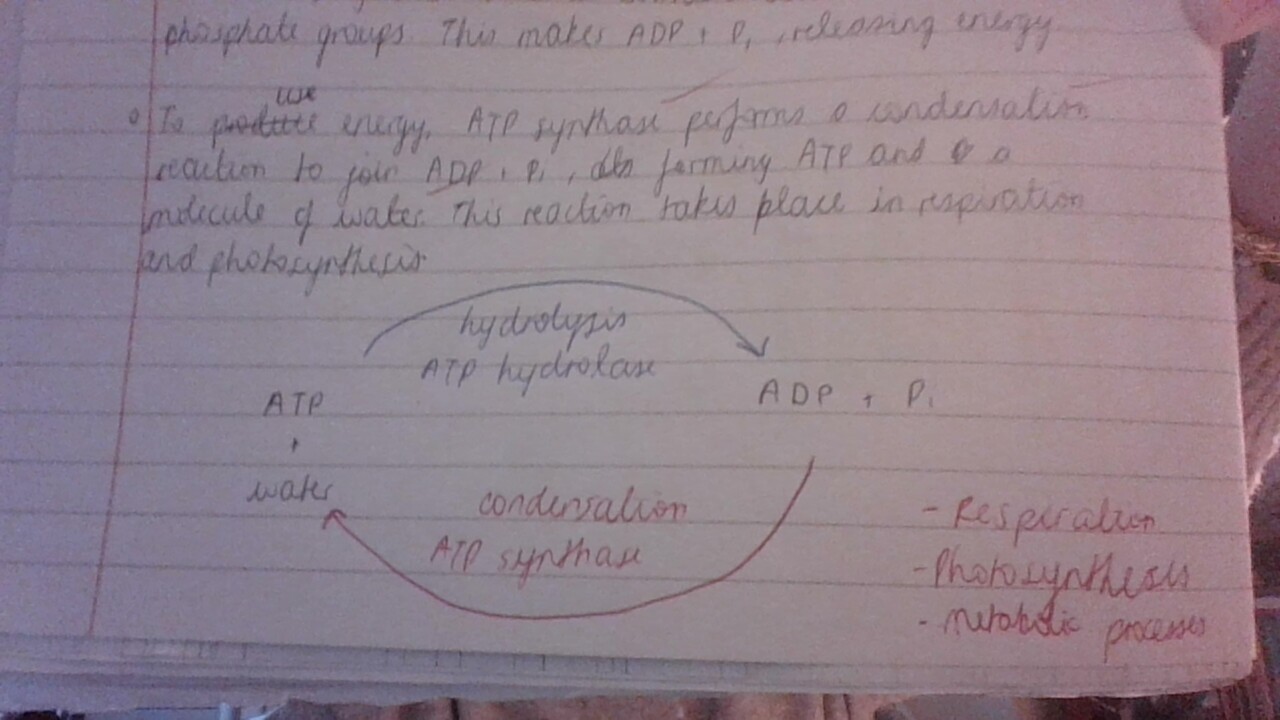(3.1) 6, 7, 8 - ATP ,water, inorganic ions
1/16
There's no tags or description
Looks like no tags are added yet.
Name | Mastery | Learn | Test | Matching | Spaced |
|---|
No study sessions yet.
17 Terms
ATP nucleotide structure
3 phosphate groups
ribose sugar
adenine base
what does ATP stand for
Adenosine Triphosphate
How does ATP release energy
hydrolysis
ATP hydrolase
breaks unstable bonds between phosphate groups
energy released
makes ADP + Pi
How does ATP use energy
condensation
ATP synthase
energy used
make ATP + water
Where does ATP use energy
respiration
photosynthesis
metabolic processes
active transport
Why is ATP an immediate energy source
unstable bonds between phosphates easily broken (repulsion)
high energy bonds
Diagram for uses of ATP

6 properties of water
dipolar (O more electronegative)
cohesive → hydrogen bonds
high specific heat capacity
high latent heat of vapourisation
solvent
transparent
specific heat capacity
energy required to raise 1kg of a substance by 1OC without changing state
specific latent heat of vapourisation
energy required to change state from liquid ot gas
why is water a good buffer against sudden temperature changes
high specific heat capacity
hydrogen bonds require more energy to raise temperature of water
maintains constant environment → buffer in aquatic environment
why is high latent heat of vapourisation of water useful in hot weather?
hydrogen bonds
thermal energy to break bonds
sweat evaporates
cooling effect
how are cohesive properties useful in plants
allows flow of water → transport of substances in xylem
photosynthesis (water from xylem)
why are pond skaters abe to walk on water
hydrogen bonds
create cohesion
surface tension
where are inorganic ions found
organisms in solution (eg cytoplam/bodily fluids)
5 examples of inorganic ions
H+
phosphate ions
iron ions
sodium + potassium
sodium
5 uses of inorganic ions
hydrogen - pH
iron - haemoglobin
phosphate - DNA / RNA / ATP
sodium + potassium - electrical impulses
sodium - transport of glucose and amino acids across plasma membrane